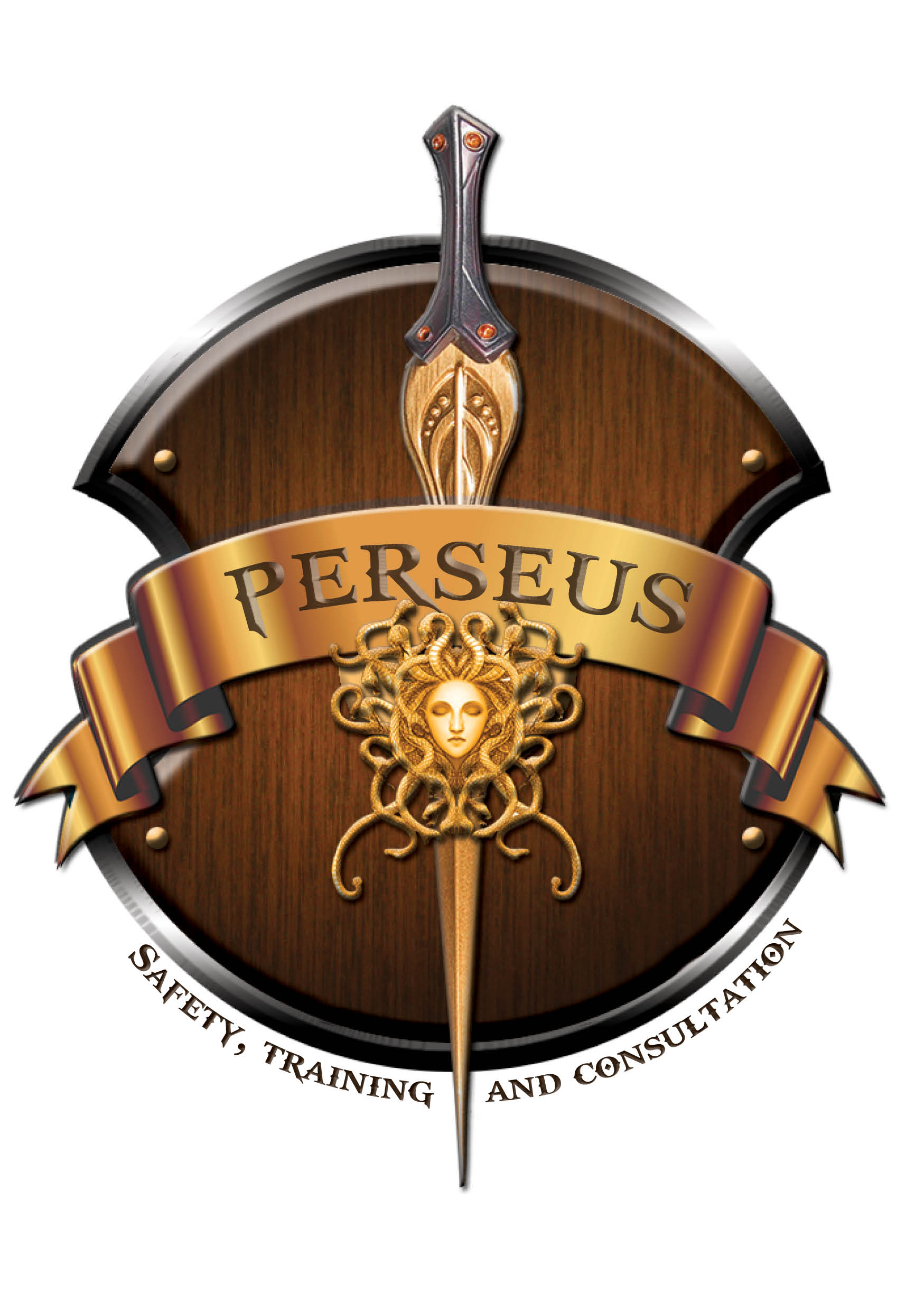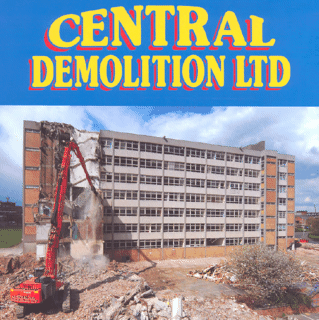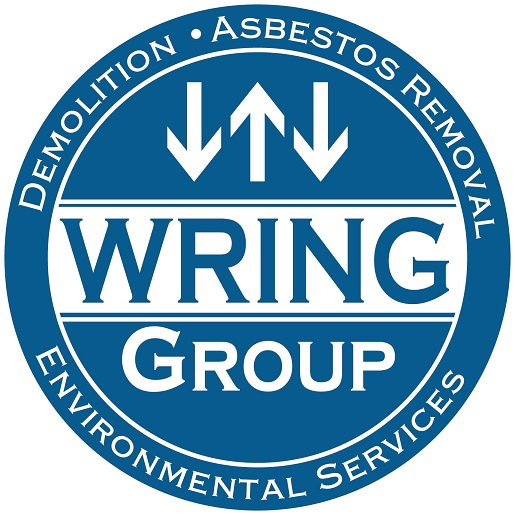Information
-
Audit Title
-
Audit No.
-
Client / Site
-
Location
-
Conducted on
-
Prepared by
-
Site manager/supervisor
SSiP and noted items
-
Is there an existing CHAS certificate?
-
CHAS certificate.
-
Is there an NFDC certificate?
-
NFDC certificate.
Site project information
-
Demolition type
-
Project environment
- City centre
- Commercial zone
- Residential zone
- Industrial zone
- Sub-urban
- Agricultural
-
What type of work are they carrying out?
-
What resources are available for this project? (Plant and equipment)
-
Plant and equipment.
1.0 Site documentation
-
1.1 Is there a company's general health and safety policy statement displayed on site and available for inspection?
-
1.1.1 When was it last reviewed?
-
1.1.2 Has the H&S Policy and H&S Statement been communicated to the workforce?
-
1.1.3 Is the policy signed and dated?
-
Health and safety policy.
-
1.2 Is there a detailed H&S management plan available for the project?
-
1.3 Has this project been notified to the appropriate authority?
-
1.3.1 Is a copy of the F10 displayed?
-
F10
-
1.4 Is there a section 80 and 81 or a demolition warrant in place for this project?
-
1.5 Is there a copy of the Refurbishment or Demolition asbestos survey on site?
-
1.6 Has a job specific method statement been developed for the work in progress?
-
1.6.1 Is this adequate for the work in hand?
-
1.7 Are there adequate risk assessments available for the tasks being undertaken on this project?
-
1.8 Are there adequate COSHH assessments for all hazardous substances on site?
-
1.9 Is the H&S poster displayed on site and completed?
-
1.10 Is there a copy of the contractor’s employer’s liability insurance certificate displayed?
-
1.10.1 What is the date of expiry?
-
Health and safety poster.
-
1.11 Is there an adequate format for recording day to day information on site? I.e. Site diary or similar?
-
Site documentation: Observations
-
Additional photographs.
2.0 Site Organisation / Security
-
2.1 Does the site have a secure boundary with controlled access points?
-
2.2 Are there adequate warning signs to comply with the Safety Signs Regulations?
-
Warning signs.
-
2.3 Is there an adequate emergency / fire / traffic management plan for this site?
-
2.3.1 How is this communicated?
-
Recorded type.
-
2.3.1 Explanation on how this information is communicated.
-
2.4 Does this site have adequate controls in place to prevent unauthorised access to site?
-
2.5 Are adequate site inductions carried out and recorded?
-
Signing off/attendance sheet.
-
2.6 Does the contractor carry out regular Tool Box Talks to ensure adequate communication is carried out on safety matters?
-
Attendance sheet.
-
2.7 Have any Temporary works been identified?
-
2.8 Have the Temporary works been designed and checked?
-
2.8.1 Note design reference. If full temporary works are in place document trail to be reviewed.
-
2.9 Confirm suitable arrangements are in place for Temporary work Co-ordinator and Temporary works supervisor (including Heras fencing).
-
2.9.1 Note names of appointed persons. TWC: TWS:
-
2.10 Is there a permit to load unload the Temporary works?
-
Site Organisation / Security: Observations
-
Additional photographs.
3.0 Competence and Training
-
3.1(a).1 Do all operatives have a valid CCDO card as per NFDC rules?
-
3.1(b).1 Do all operatives have a valid CPCS (demolition specific) plant card as per NFDC rules?
-
3.1.2 Is there evidence of the signing in sheet for reference?
-
Signing in sheet.
-
3.4 Does the Company have a current training matrix for all employees and can the site supervisor access this matrix?
-
Training matrix.
-
3.5 Are the site supervisors / site manager suitably qualified to undertake their roles with the appropriate level CCDO card? (Gold & Black)?
-
Card.
-
3.6 Have ALL operatives undertaken a recognised Asbestos Awareness or Asbestos removal course to NDTG standard?
-
Training records.
-
3.7 Have ALL operatives undertaken a recognised Demolition Health and Safety Awareness course to NDTG standards?
-
Training records.
-
3.8 Does the organisation have access to competent health and safety advice?
-
3.8.1 Who is the provider?
-
3.8.2 Internal or external?
-
3.8.3 Confirm CV of appointed safety advisor?
-
3.9 Are there suitable arrangements in place for assessing the competence of sub-contractors?
-
Competence and Training: Observations.
-
Additional photographs.
4.0 Inspections and Maintenance (Plant & Equipment)
-
4.1 Does all plant and equipment being used for this project have the relevant inspection certification available PUWER?<br>Mechanical & Electrical
-
4.2 Is all the plant and equipment used on site detailed within a site register and the maintenance and pre-operational inspections of all plant recorded?
-
4.3 Is all plant and equipment adequate and in a suitable condition for the work being carried out?
-
4.4 Is all electrical equipment PAT tested, including Welfare Unit?
-
Inspections and Maintenance (Plant & Equipment): Observations
-
Additional photographs.
5.0 Working at Height
-
5.1 If work at height is necessary, has safe access been provided in line with the Working at Heights Regulation?
-
5.1.1 Is there a written assessment available?
-
5.2 Where a scaffold has been provided does a competent person inspect the scaffold on a regular basis?<br>At least every 7 days.
-
5.3 Where an aluminium scaffold tower is in use has it been erected and inspected by a competent person prior to use?
-
5.4 Where fall arrest equipment is in use has it been inspected, certificated and checked prior to use and findings recorded by a competent person?
-
Name of Competent Person?
-
5.5 Are all operatives trained to work at height?
-
Training certificates.
-
5.6 Is a rescue plan in place?
-
Has the plan been drilled, tested and updated?
-
Working at Height: Observations.
-
Additional photographs.
6.0 Asbestos Removal NNLW (Notifiable Non Licensed Work) and or (Non Licensed Work) NLW
-
6.1 Confirm suitable arrangements are in place within the Health & Safety Policy.
-
6.2 NNLW Notification Number
-
6.3 Are all operatives adequately trained in NNLW asbestos removal techniques to UKATA//NDTG standards?
-
6.4 Are operatives wearing the correct PPE/RPE for the work in hand as identified in the RAMs?
-
6.5 Has the RPE issued been correctly face fitted?
-
Confirm date of certification and for appropriate mask being used.
-
6.6 Is the working area suitable demarcated and asbestos warning signs displayed in prominent positions?
-
6.7 Are operatives handling ACMs in Accordance with RAMs?
-
6.8 Is the waste skip secure and lockable?
-
Asbestos skip.
-
6.9 Are waste disposal documents being recorded correctly?
-
6.10 Are Medical Records kept?
-
6.11 Are exposure records kept?
-
Asbestos Removal NNLW (Notifiable Non Licensed Work) and or (Non Licensed Work) NLW: Observations.
-
Additional photographs.
7.0 Licensed Asbestos Removal works.
-
7.1 Confirm that suitable arrangements are in place within the Health & Safety Policy.
-
7.2 If asbestos work has been completed, review Clearance Test Certificate.
-
7.3 Is the ASB5 notification available for inspection?
-
7.4 Is there a detailed method statement for the asbestos removal operations available for inspection?
-
7.5 Is the decontamination unit in position and fully certificated and operational?<br>
-
7.6 Is the asbestos removal works fully enclosed with an operational three stage air lock and adequate viewing panels?
-
7.7 Are there records of air monitoring, clearance certification, face fit tests, operative and supervisor training, medicals and equipment inspection records?
-
7.8 If removal works being carried out confirm Competence of Sub-Contractor and works supervisor.
-
Licensed Asbestos Removal works: Observations.
-
Additional photographs.
8.0 Health Surveillance.
-
8.1 Has an adequate evaluation of hand and arm vibration been carried out?<br>
-
8.1.1 Is operative use recorded?
-
8.2 Has a hand and arm vibration risk assessment been carried out?
-
8.3 Has an adequate evaluation of noise generating activities been carried out?
-
8.4 Are operatives engaged in hot works in possession of recent lead medicals if identified in risk assessments?
-
8.5 Are suitable controls in place to protect operatives from health hazards?<br>i.e. ventilation, screening, suitable equipment, work rotation, etc.
-
8.6 Are operatives using PPE correctly in line with the hazardous activities being undertaken?
-
8.7 Has RPE been correctly face fitted for the task in hand?
-
8.8 Has the appropriate RPE been issued in accordance with RAMs?
-
8.9 Are there adequate arrangements in place for manual handling operations?
-
8.10 (a) Confirm arrangements are in place to ensure compliance with health surveillance procedures for exposure to:<br>• Noise
-
8.10 (b) Confirm arrangements are in place to ensure compliance with health surveillance procedures for exposure to:<br>• Dermatitis
-
8.10 (c) Confirm arrangements are in place to ensure compliance with health surveillance procedures for exposure to:<br>• Respiratory issues
-
8.10 (d) Confirm arrangements are in place to ensure compliance with health surveillance procedures for exposure to:<br>• Vibration
-
8.11 Does your company operate an occupational health policy?
-
Health Surveillance: Observations
-
Additional photographs.
9.0 Lifting Operations.
-
9.1 Has a suitable lifting plan and method statement been developed for specific lifting activities?
-
9.2 Have Risk Assessments been completed for the lifting works?
-
9.3 Are the persons carrying out the lifting operations competent to carry out their duties? i.e. Appointed Persons, Lifting Supervisor, Slinger-Signaller.
-
9.3.1 Who is the appointed person?
-
9.4 Are all appliances inspected weekly and thoroughly examined every 12 months by a competent person?
-
9.5 Does all the lifting gear/ chains slings etc on site have current test certification?
-
9.6 Are the lifting operations being carried out in line with the lift plan and is the operation being conducted safely and meet current regulatory requirements?
-
9.7 Confirm that suitable arrangements are in place within the Health & Safety Policy.
-
Does the policy give reference to lifting plans and appointed persons?
-
Lifting Operations: Observations.
-
Additional photographs.
10.0 Emergency Procedures and Equipment.
-
10.1 Is there adequate provision for first aid arrangements?
-
10.1.1 Name(s) of appointed Emergency First Aider No of Emergency First Aiders No. of Full (3D) First Aiders
-
10.2 Is a first aid kit available on site and conforms to BS8599 and that the contents are in date?
-
10.3 Is there a clearly marked muster point?
-
10.4 Are there clearly marked fire points situated in prominent positions?
-
10.5 Are all fire extinguishers suitable for the specific work areas and are they maintained correctly?
-
10.6 Are there satisfactory arrangements for recording, reporting and investigating accidents and RIDDOR incidents?<br><br>(Review and comment on any recent accidents, investigations and remedial actions).
-
Emergency Procedures and Equipment: Observations.
-
Additional photographs.
11.0 Demolition / Dismantling.
-
11.1 Are the correct demolition and dismantling procedures being followed in accordance with RAMs?
-
11.2 Are operatives / plant operators using the correct plant and equipment for the work in hand in accordance with Method Statement?
-
11.3 Are active hazardous working areas suitably cordoned off and or controlled by a banksman?
-
11.4 Are all operatives working from a safe access point?
-
11.5 Are all operatives wearing the correct PPE/ RPE for the work in hand?
-
11.6 Are exclusion zones being correctly established and controlled in accordance with BS6187?
-
11.7 Are there Disconnection Certificates for Utilities?
-
Demolition / Dismantling: Observations.
-
Additional photographs.
12.0 Environmental Issues.
-
12.1 Is dust kept to a minimum and is dust suppressant used when required?
-
12.2 Have all waterways, surface water drains, sewers been identified and precautions taken to avoid contamination of water courses etc?
-
12.3 Are nuisance noise levels and activities kept to minimum and controlled to avoid a problem to surrounding areas
-
12.4 Are all other environmental issue affecting this project being handled in an environmentally safe manner (including bats, newts, and other protected flora and fauna?)
-
12.5 Does the company hold ISO 14001 Certification?
-
ISO 14001 certificate.
-
12.6 Does the Company have an Environmental Statement in place?
-
12.7 Does the Company have competent environmental advice?
-
12.8 Does the Company train employees on environmental issues?
-
What evidence is available?
-
Environmental Issues: Observations.
-
Additional photographs.
13.0 Welfare Arrangements
-
13.1 Does the site have adequate toilet, washing and drying room facilities?
-
13.2 Is there adequate provision for both men and women if necessary?
-
13.3 Are all welfare facilities clean and tidy?
-
13.4 Is there adequate provision for drinking water?
-
13.5 Are there adequate facilities for preparation and eating food?
-
13.6 If welfare provided by Principle Contractor, the Demolition Contractor has a responsibility to ensure standards?
-
13.7 Confirm that suitable arrangements are in place within the Health & Safety Policy.
-
Welfare Arrangements: Observations
-
Additional photographs
14.0 Waste Management.
-
14.1 Is there a structure in place to adequately monitor, record and manage demolition arisings? i.e. through use of the DRIDS (Demolition & Refurbishment Information Sheets) system?
-
14.2 Is there an adequate register available for the movement of all material from site?
-
14.3 Is the site registered with the environmental agency?
-
Confirm Licence & registration number:
-
14.4 Is there a materials recovery index % available for this project?
-
14.5 Is waste retained on site stored in a safe manner whilst awaiting removal?
-
Waste storage.
-
14.6 Is waste being segregated into appropriate areas or containers to avoid any buildup of waste materials?
-
14.7 Is all hazardous waste being correctly handled and disposed of?
-
Waste Management: Observations.
-
Additional photographs.
15.0 Monitor Observe Review Record (MORR)
-
15.1 Are there suitable arrangements in place and supporting evidence of regular performance reviews of health and safety e.g. workplace/site inspection reports, completed audit review, action plans for improvement and discussions/reports to senior management?
-
Monitor Observe Review Record (MORR): Observations.
-
Additional photographs.
16.0 Consultation
-
16.1 Are systems in place to ensure effective communication for non-English speaking persons or those with communication disabilities?
-
Reference to the section of H&S policy.
-
Additional evidence i.e translated documents and/or handbooks.
-
16.2 Are there adequate systems in place which enable co-operation and co-ordination with the organisation and within other contractors?
-
Reference to the section of H&S policy.
-
Additional evidence i.e noticeboards and co-ordination meetings.
-
16.3 Confirm procedures in place to ensure communication of Health & Safety issues with the workforce.
-
What procedures are in place?
- Yes
- No
- N/A
-
Consultation: Observations.
-
Additional photographs.
Site audit sign off:
-
Date of audit
-
Signed by site manager/supervisor
-
Site manager/supervisor photograph.
-
Signed by auditor












